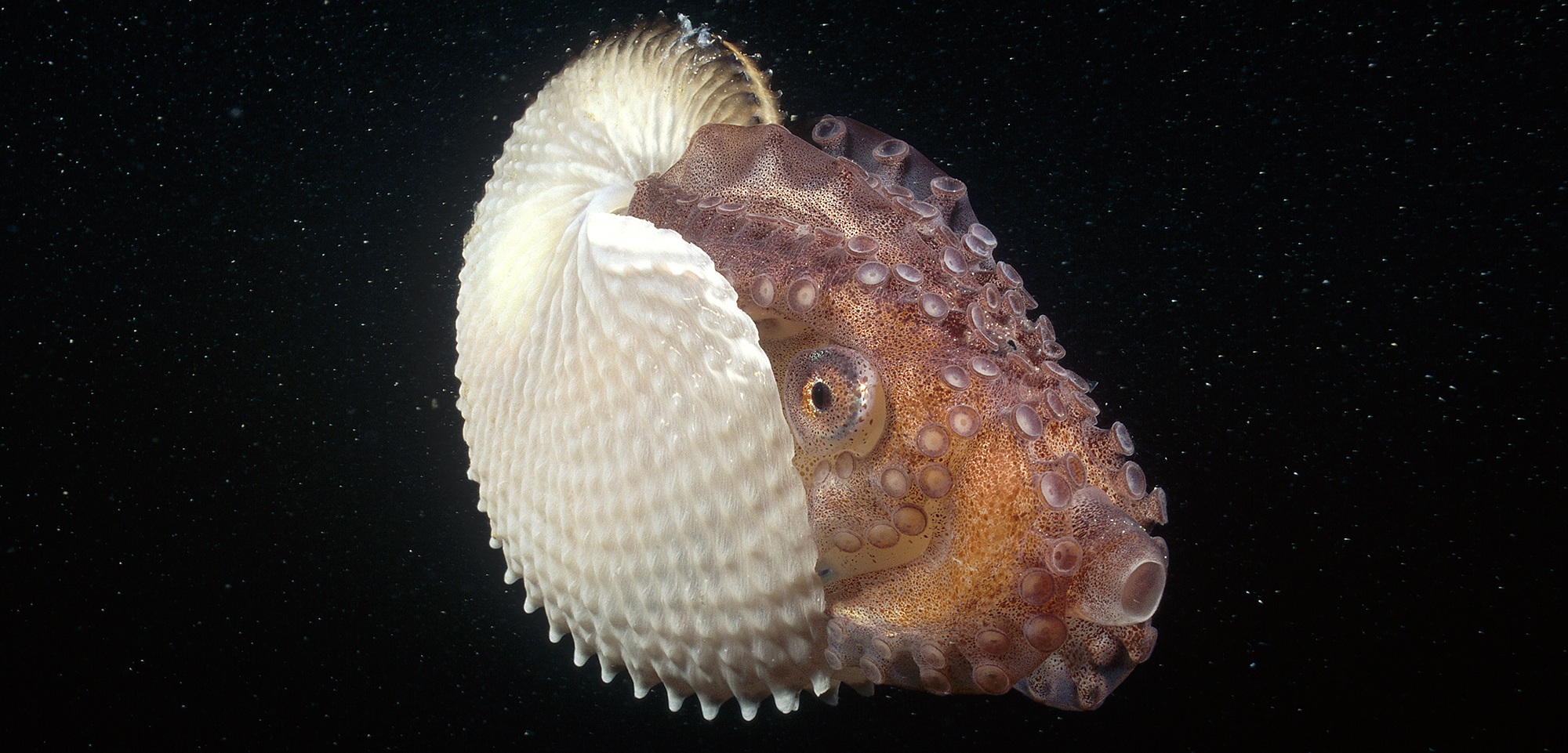In Awe of the Argonaut
Despite appearances, the paper nautilus is no evolutionary relic.
Article body copy
The paper nautilus has been on my mind for a while. I first heard of the critter, also called the argonaut, while waiting in line for a lecture at the American Museum of Natural History in New York. The queue snaked past a mostly-forgotten exhibit of seashells, and on a periwinkle-colored case I spotted a flurry of cream-colored arms exploding from a ridged spiral shell. The argonaut, memorialized as a model, seemed downright prehistoric.
As an avid naturalist, I’ve always had a soft spot for cephalopods. I’ve watched pearly nautiluses jet their shelled selves around aquaria; seen a deep sea dumbo octopus, with its ear-like fins, on a video feed from a robotic submarine; and even eyed photographs of the elusive giant squid, the closest thing to a real sea monster we know. But all the while, the paper nautilus—thrust into my imagination by an aging model in a museum—has bobbed along in the back of my mind, wrapped in its own mythology.
Then, last week, a friend (and University of Zürich paleo-cephalopod expert) Christian Klug shared this video on Facebook:
Shot by diver Dam Nguyen off California’s Channel Islands, the camera focuses on what seems to be a group of swirling, fringed discs. Close up, those dancing Frisbees resolve into a school of paper nautilus, sucker-lined arms trailing behind tough exteriors. The rare scene of argonauts in their natural habitat made me yearn for a time my petrified heart will never see, when coil-shelled ammonoids jetted through ancient seas patrolled by massive, toothy reptiles.
But first impressions can be deceiving. In truth, as I later learned from Klug, the paper nautilus is not a close relative of today’s pearly nautilus, nor is it an echo of the long-lost ammonoids. The creature that had ensnared my mind is totally different.
The argonaut is an octopus, and its prehistoric look is created by the way the squishy creature reproduces. The “shell,” Klug says, “is actually an egg case secreted by two specialized arms,” and made of the mineral calcite. As she swims, a female argonaut cuddles her eggs in the shell-like cases pressed against her sides. Lacking cases, male argonauts just look like itty-bitty octopuses.
The flotilla Nguyen spotted off California showcases just one species of paper nautilus. Others swim the open ocean around the world. And while argonauts are not nearly as ancient as the ammonoids they reminded me of, they do have a respectable record—the oldest argonaut egg cases are around 15 million years old. While our ancestors were monkeying around in the trees, paper nautiluses were dipping through the seas.
So, my Mesozoic nostalgia was a little misplaced. The paper nautilus isn’t a glimmer from the Age of Reptiles, but something newer and entirely different. And to me, that’s just as wonderful.

